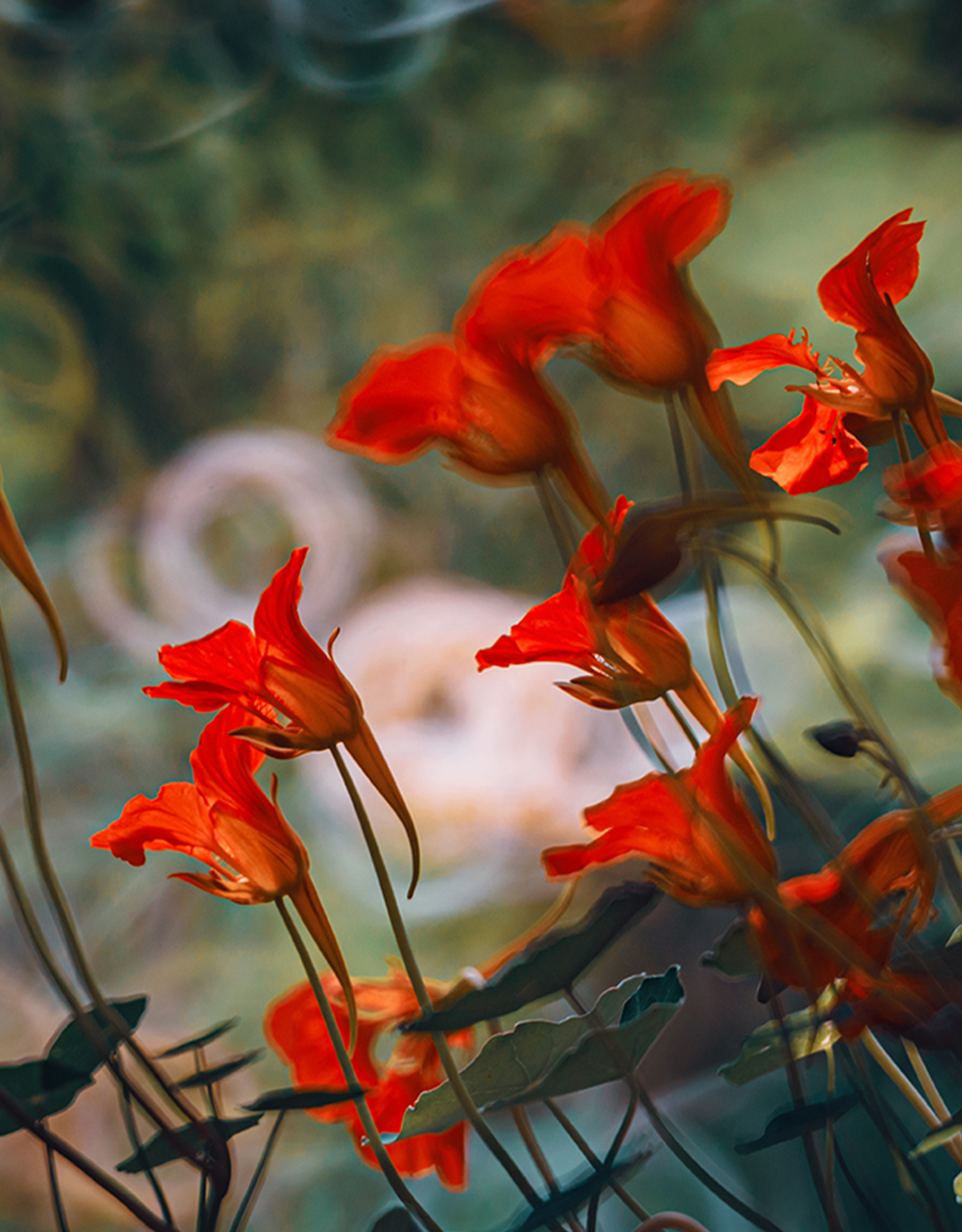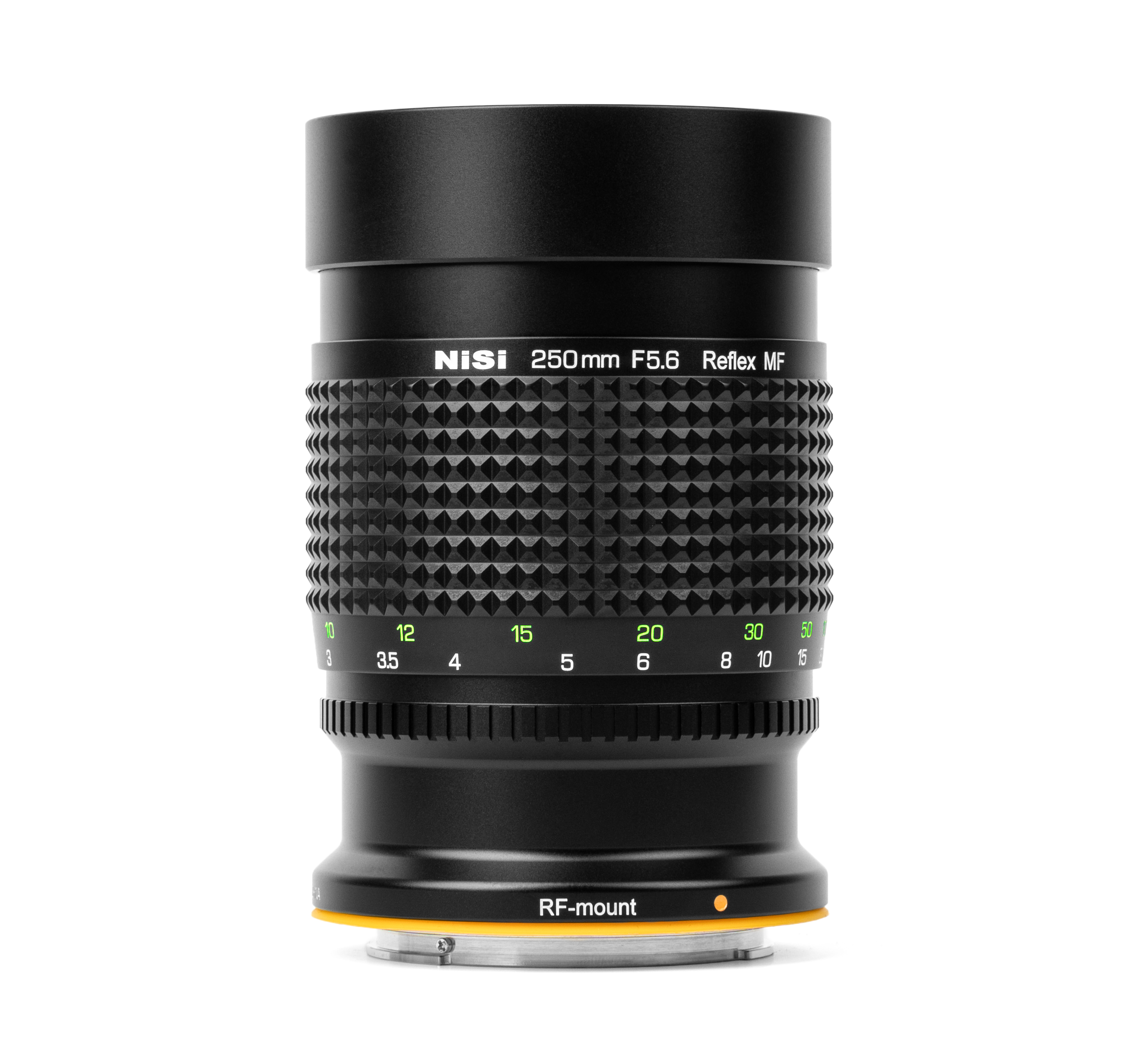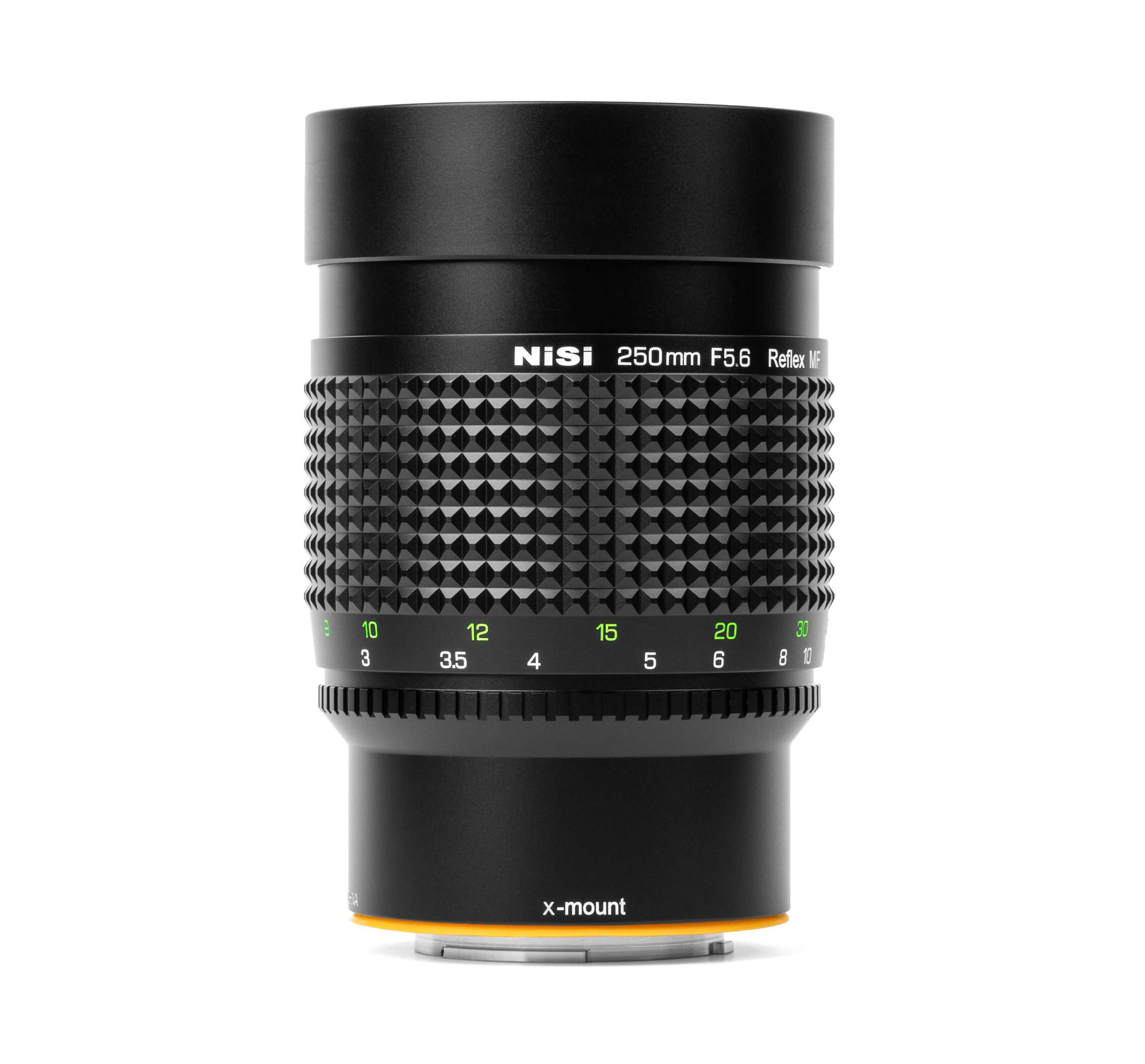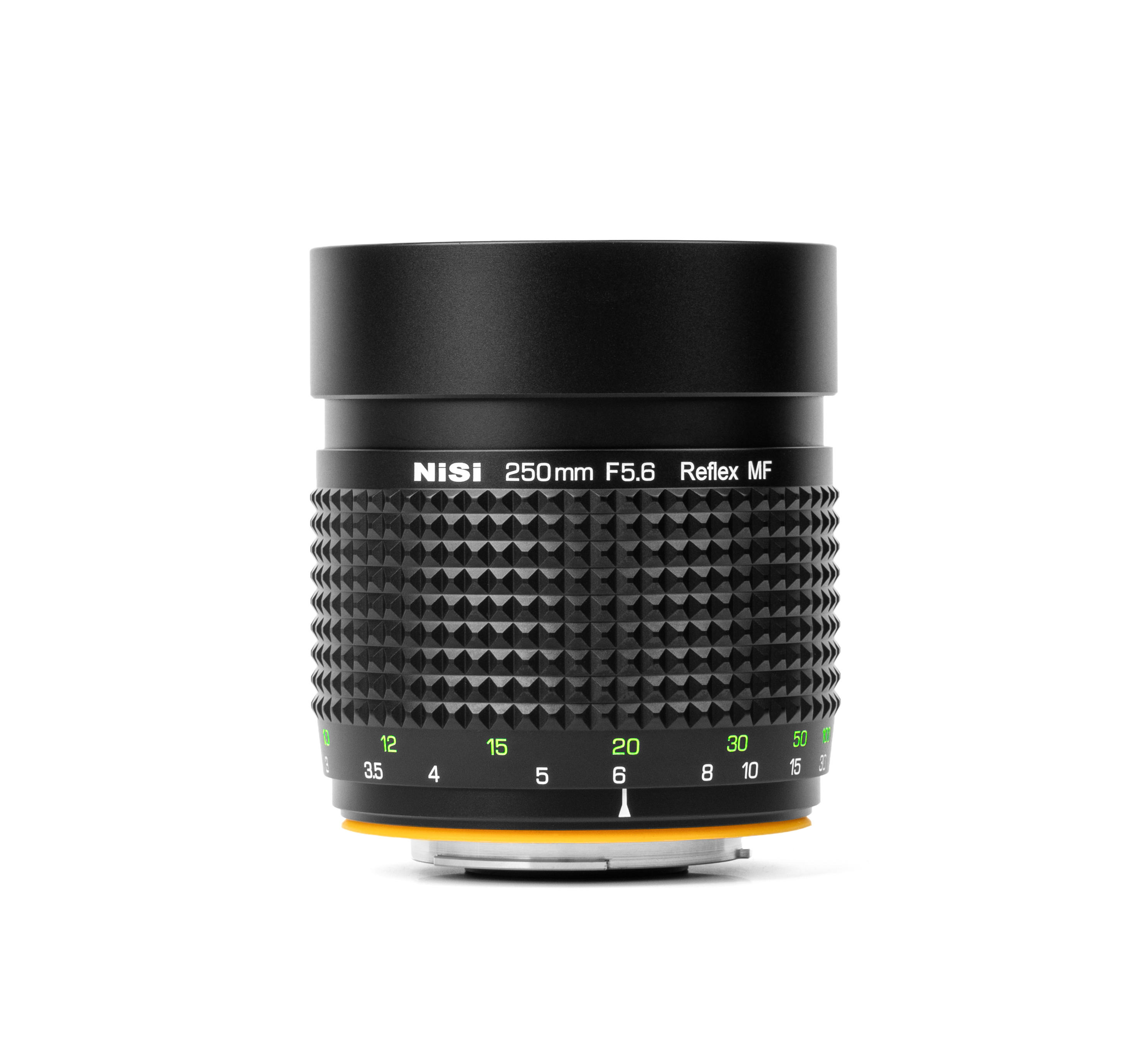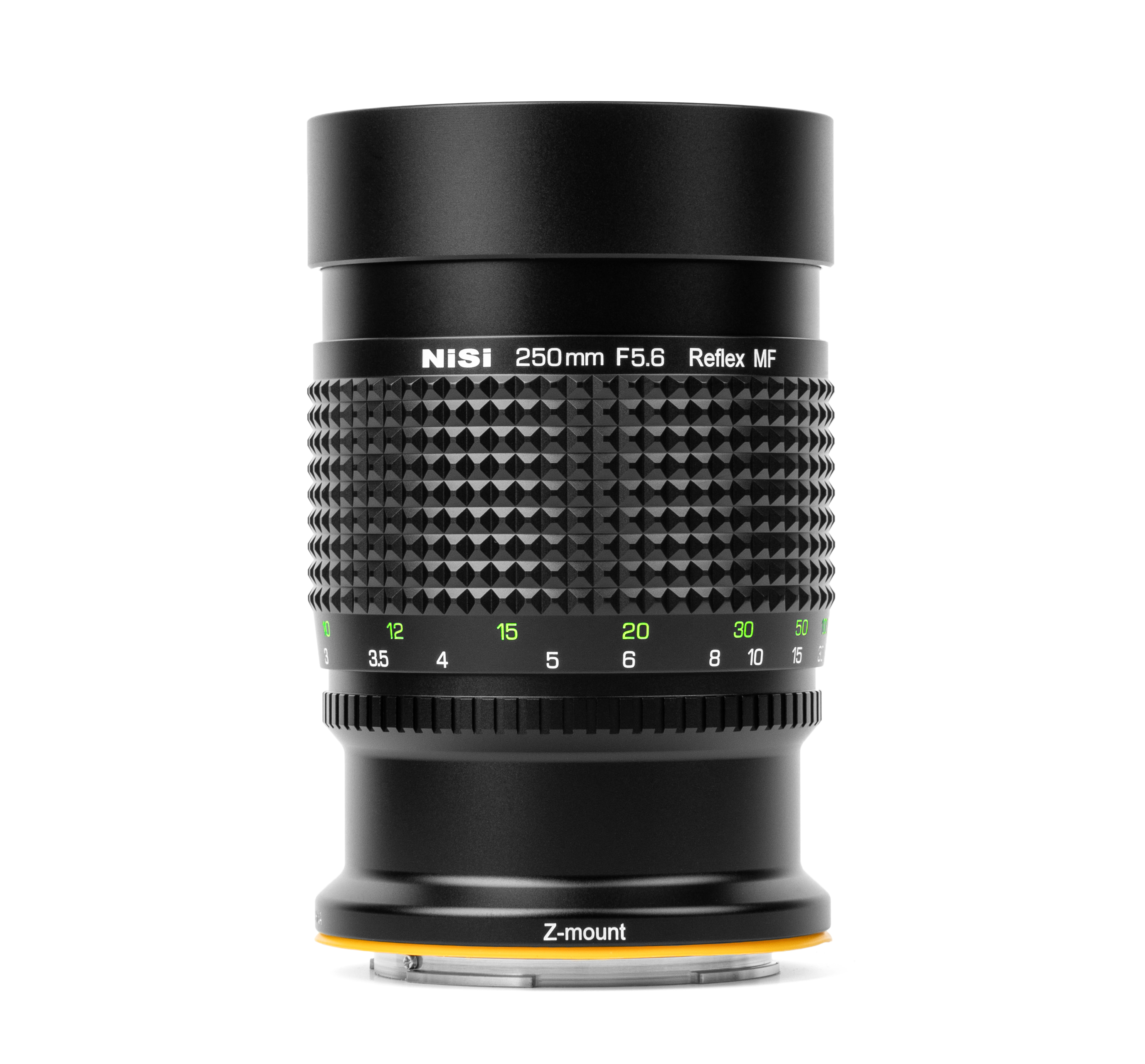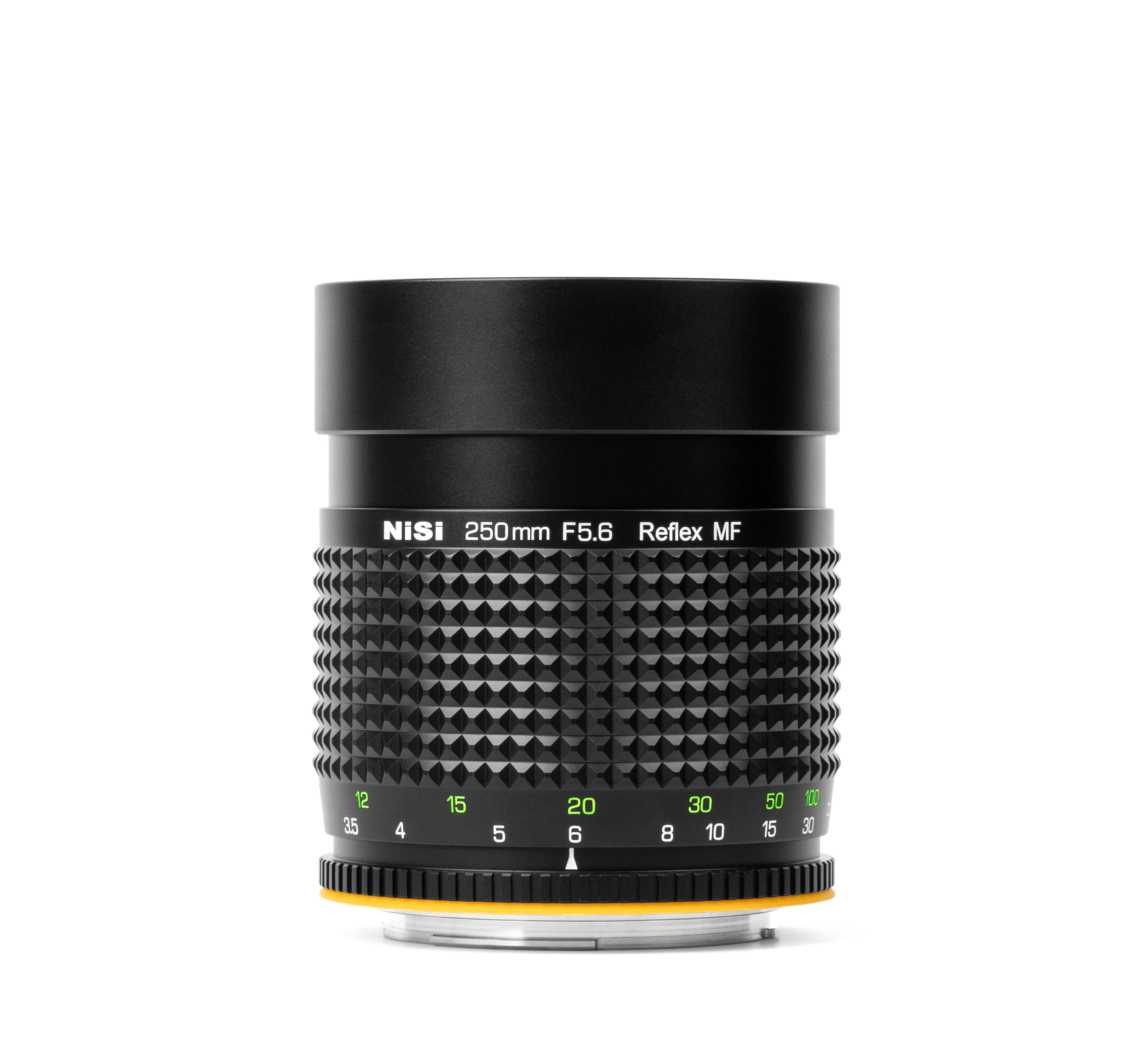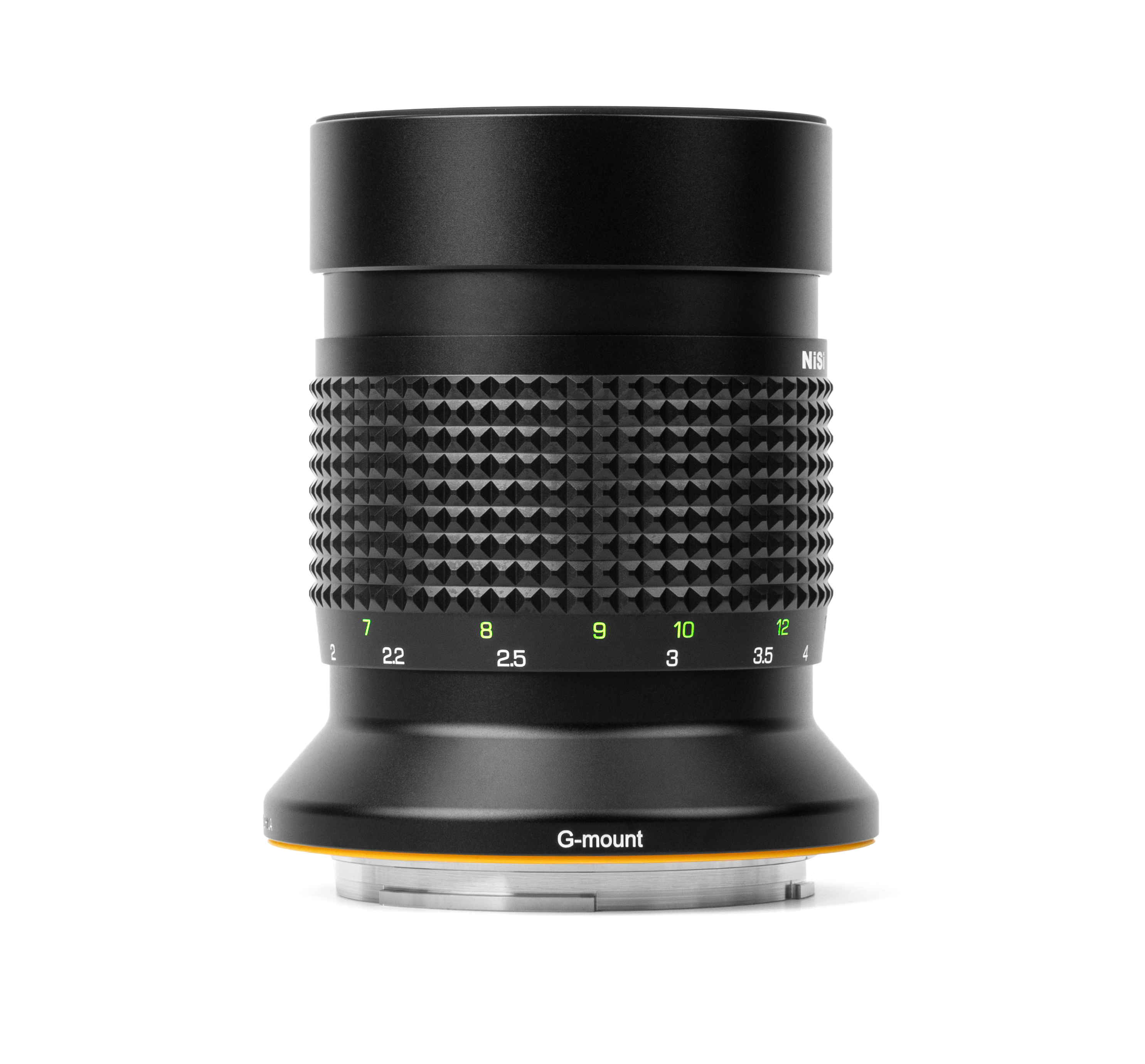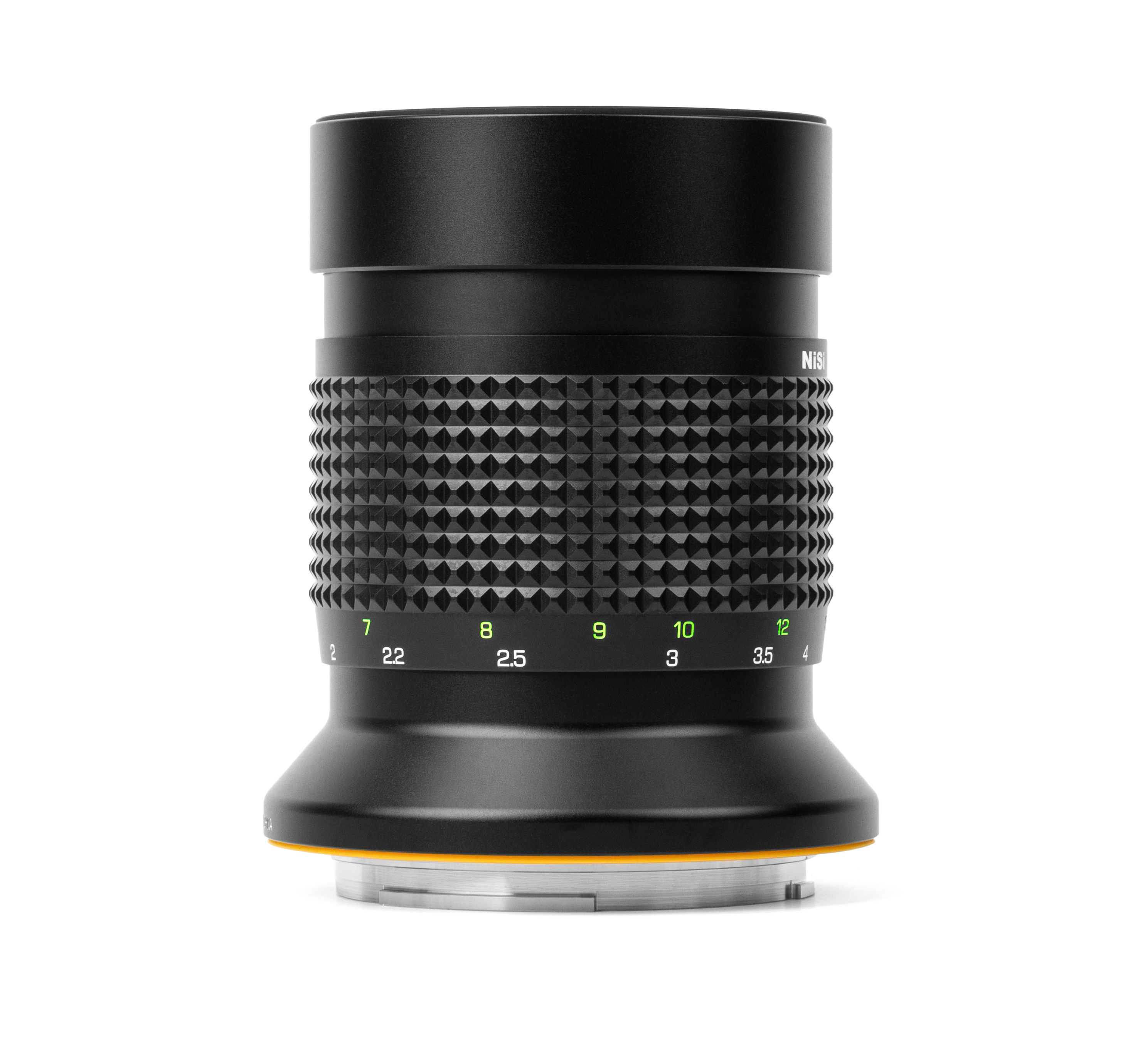World Premiere of the NiSi Reflex 250mm F5.6 Mirror Lens
by Magda Wasiczek
At the end of June 2024, the world premiere of the NiSi Reflex 250mm F5.6 mirror lens took place. This lens is largely based on the analog Minolta RF Rokkor-X 250mm F5.6 mirror lens.
NiSi has been known for its high-quality filters for many years, and I also had the pleasure of testing the NiSi macro conversion lenses (77mm and 58mm). Both products impressed me in terms of optical quality and craftsmanship. Therefore, I was very excited to test the next product – the NiSi Reflex Lens 250mm F5.6 MF.
Build Quality and Features
Regarding the quality and aesthetics of the construction, there were no unpleasant surprises. The lens has a solid metal housing and a metal mount. It features a small, fixed, retractable lens hood (1 cm).
This fully manual lens is available with mounts for all available camera systems on the market. It offers a 250mm focal length for full-frame cameras and a fixed aperture of F5.6.
The advanced optical construction consists of 6 elements in 3 groups and is coated with 48 anti-reflective coatings. The lens diameter is 62mm, with the option to attach filters. The minimum focus distance is 2 meters. The lens also comes with a soft velvet pouch for storage.
I tested the lens with a Nikon F mount on my full-frame Nikon D750, as well as through a Nikon F/Fuji X adapter on the mirrorless Fujifilm XT4 (APS-C sensor).
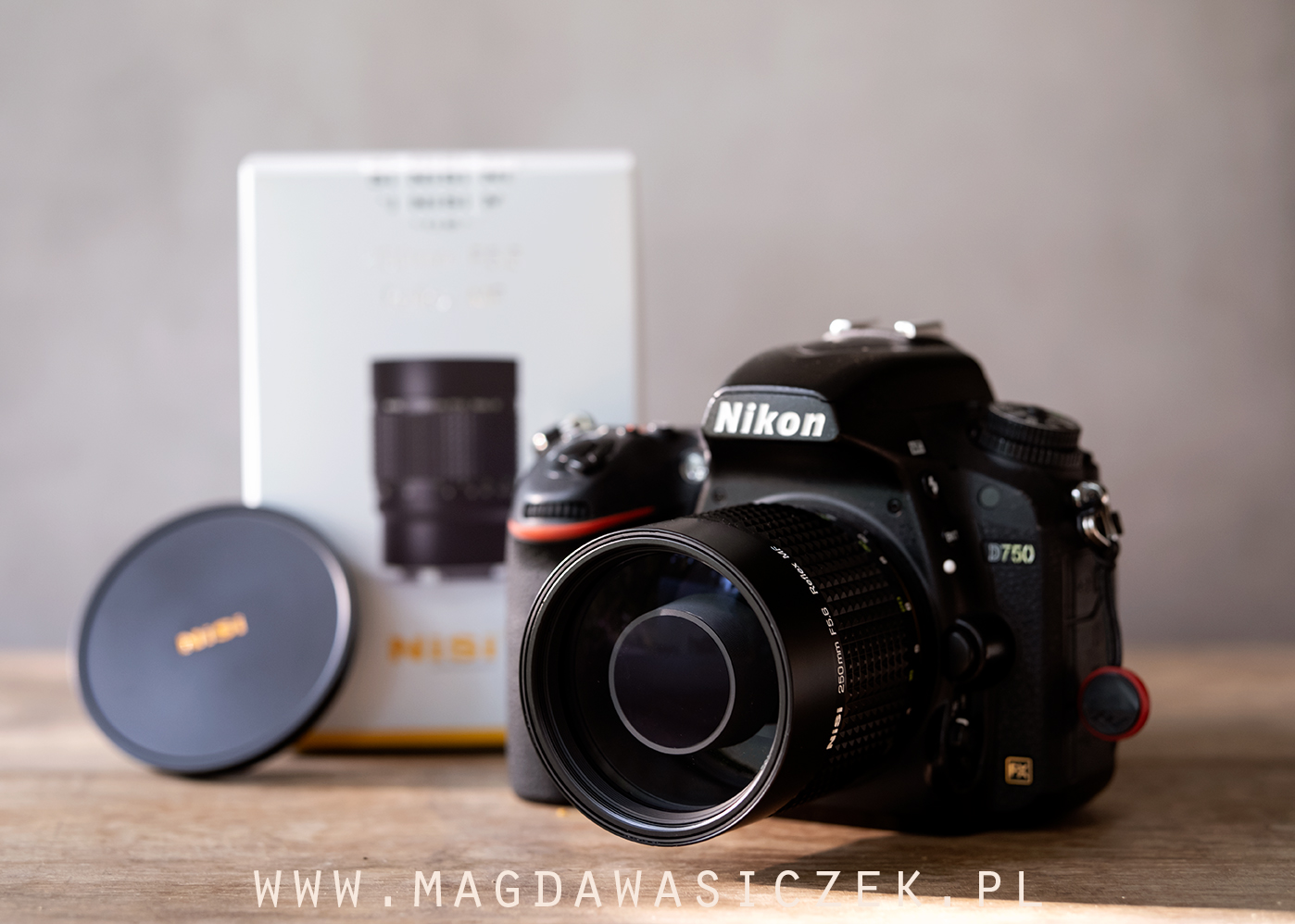
Comparison and User Experience
For over 18 years, I’ve been using a Rubinar 300mm F4 MACRO mirror lens with an M42 mount, a rare Soviet-era construction, currently priced around 3,000 PLN (about 700€). The Rubinar is significantly larger and heavier than the NiSi Reflex 250mm F5.6 MF. Many fans of the distinctive bokeh will be pleased to find a lens at a fraction of the price that produces a similar donut-shaped bokeh.
The NiSi Reflex is compact (7 cm high, 8 cm with extended lens hood) and very lightweight. These compact dimensions make it an ideal companion without weighing down your backpack or camera bag. However, the small size does come with a downside: focusing by hand becomes more challenging. During testing, I had fewer issues with the heavier Nikon D750, but with the lighter Fujifilm XT4, I found that I needed a tripod. Although the Fujifilm XT4 has image stabilization, it doesn't work with manual lenses.
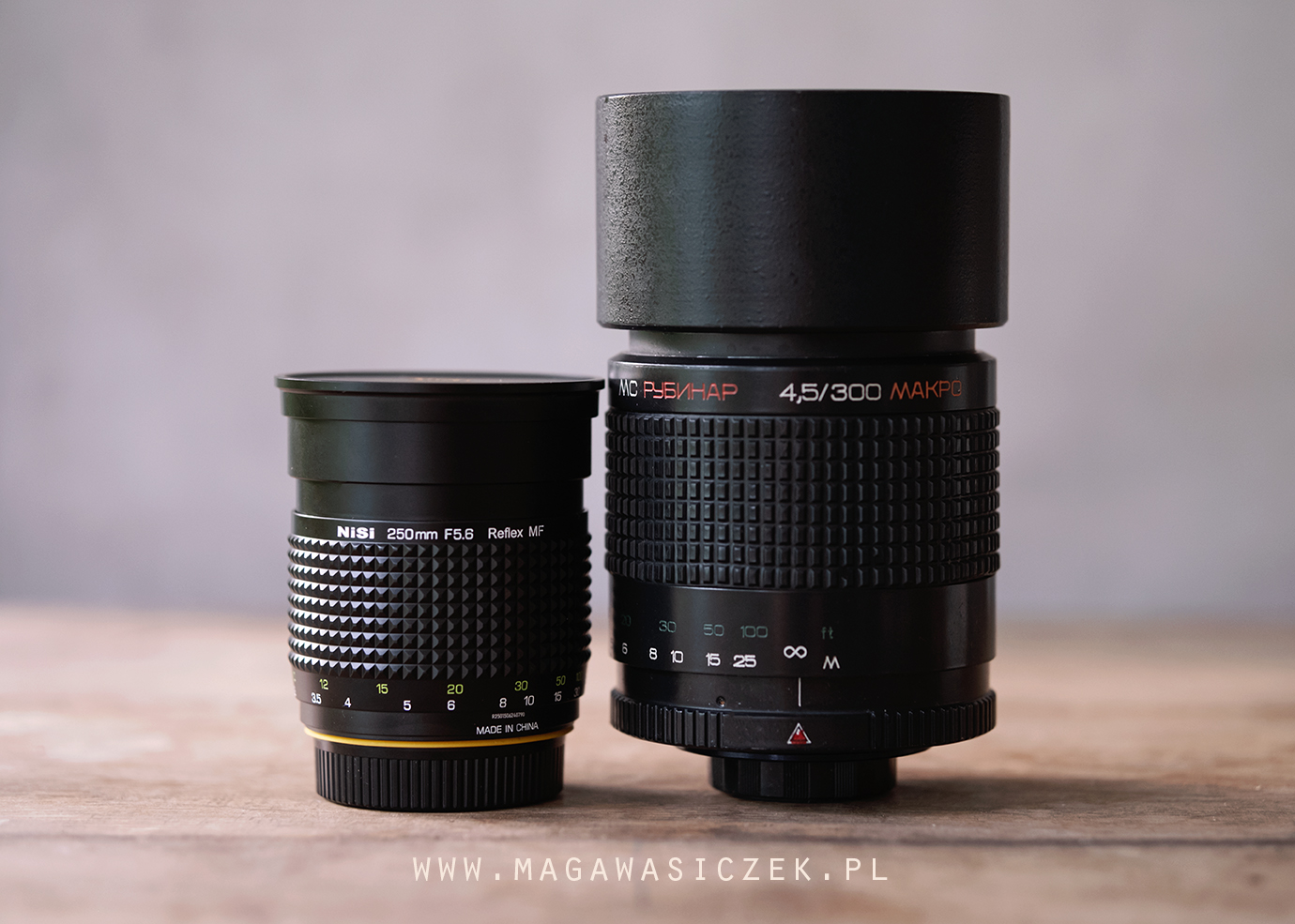
Image Quality and Bokeh
The greatest strength of mirror lenses is their unique, painterly bokeh. To illustrate this, I present two photos taken with the Nikon D750: one with the Tamron 70-200mm F2.8 at 200mm and f/5.6, and the other with the NiSi Reflex 250mm F5.6. Both images were shot from a distance of about 2.5 meters.
By comparing these shots, you can get a better sense of the bokeh quality that each lens produces and how the NiSi Reflex stands out with its characteristic donut-shaped bokeh, typical of mirror lenses.
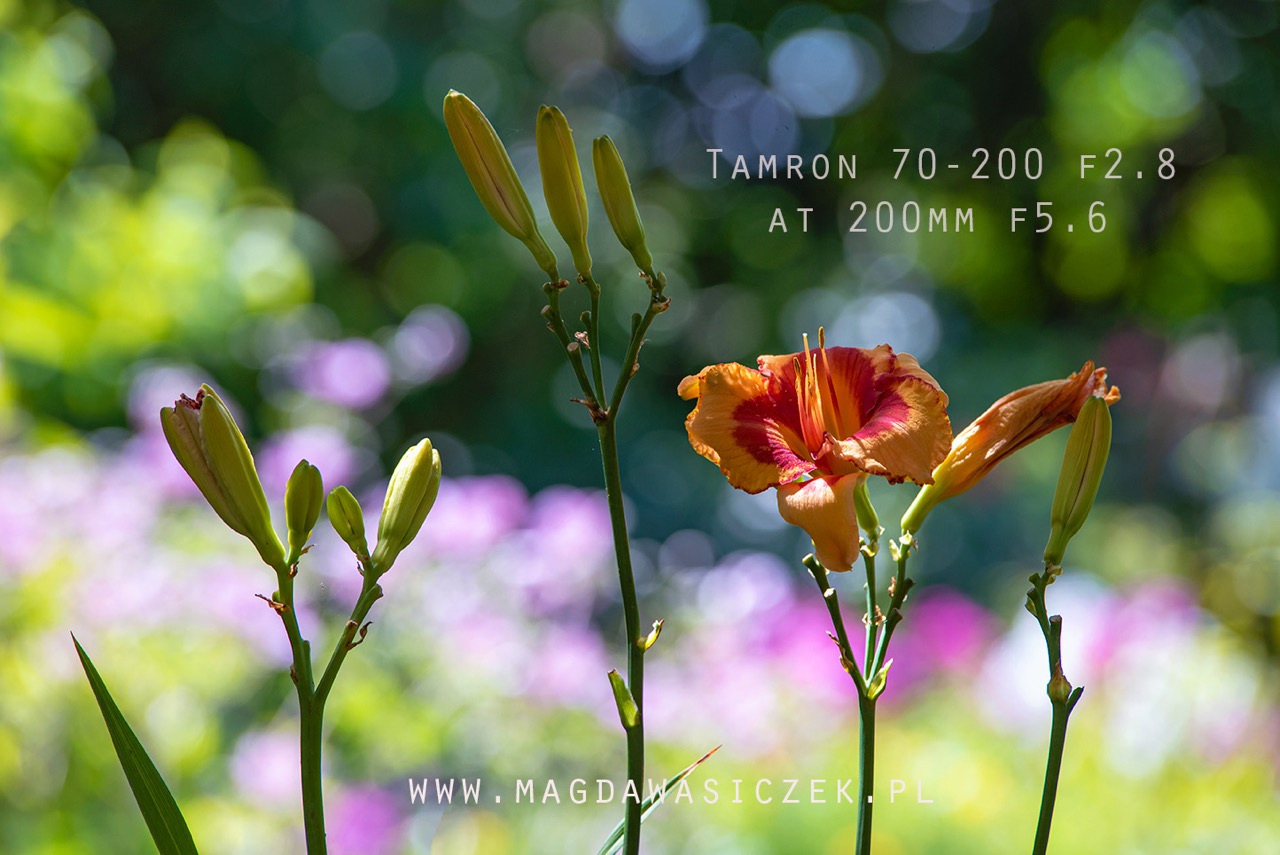
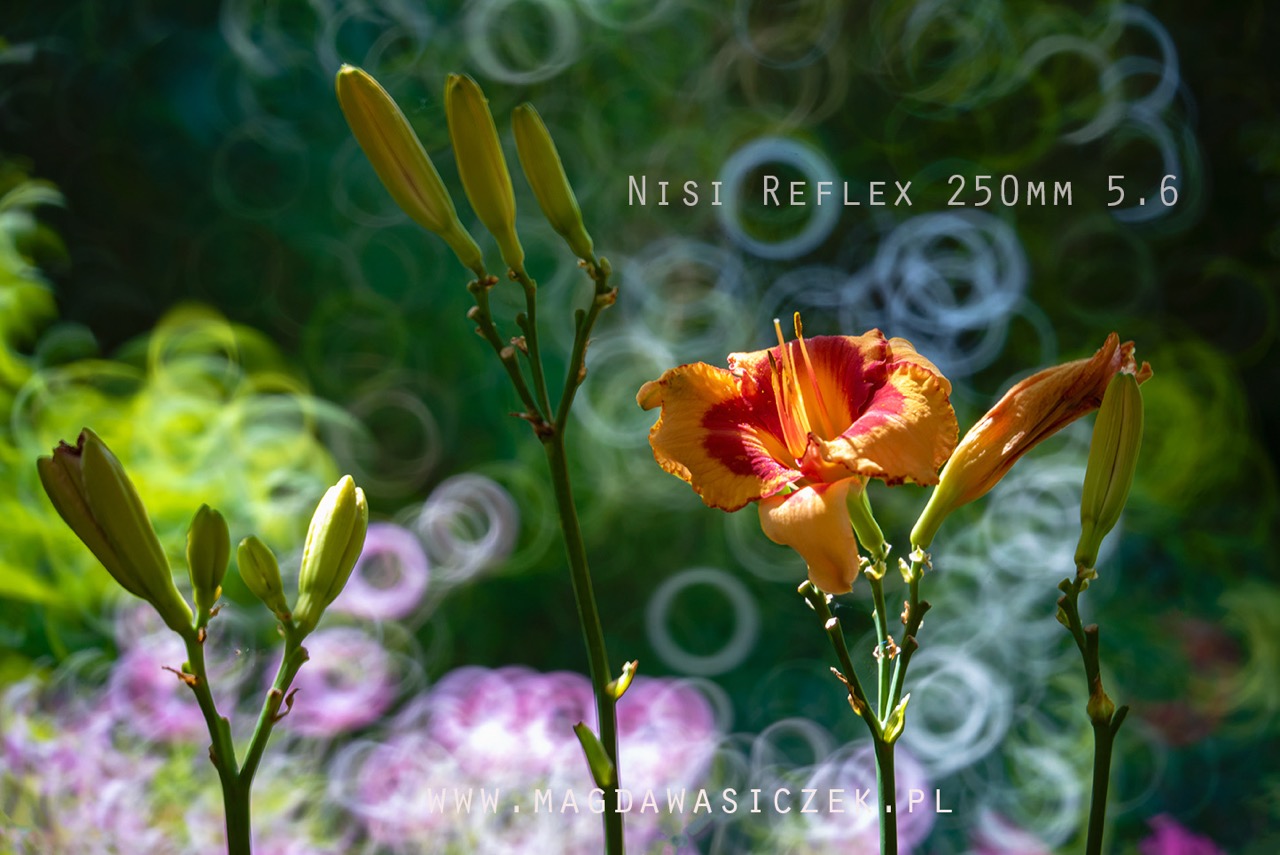
In the past, this bokeh was considered unattractive and distracting, but today it has found its fanbase. Personally, I love using mirror lenses for outdoor photography, particularly for photographing flowers.
Portraits and landscapes can also look interesting when captured with this lens. However, it's important to note that this lens doesn't achieve the sharpness of modern lenses. For me, the painterly effect takes precedence in these shots, rather than precise sharpness.


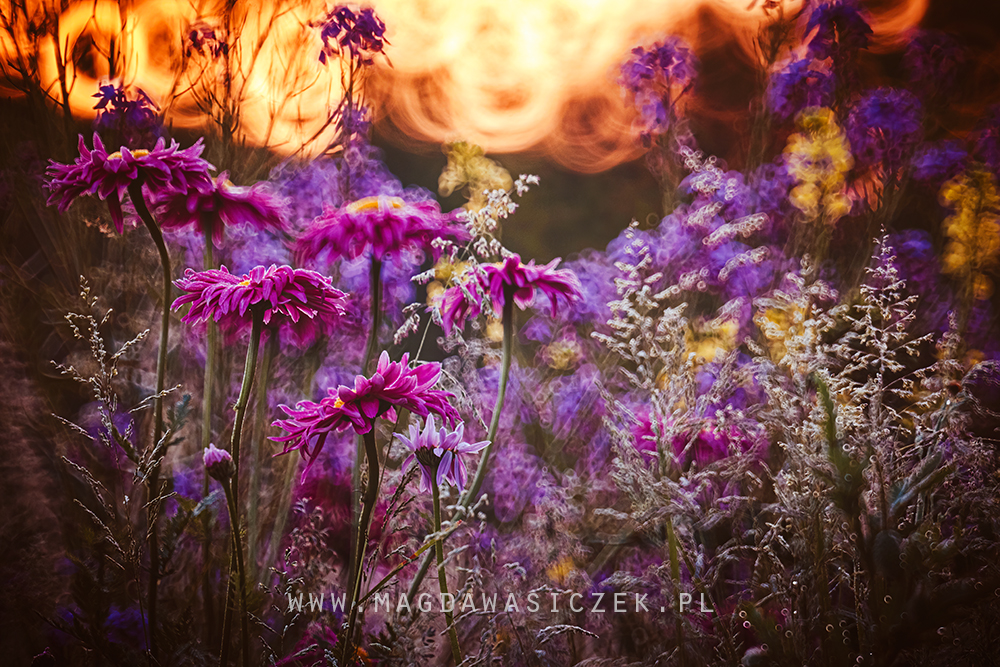
Handling and Conclusion
The focus ring of the NiSi Reflex rotates very smoothly over 270 degrees, which initially felt pleasant compared to my Rubinar. However, I later realized that a bit of resistance while focusing can be helpful for making more precise adjustments.
With a stabilized tripod and a static subject, the lens can deliver surprisingly sharp images. The f/5.6 aperture is acceptable, especially when compared to other mirror lenses with apertures of f/6.3 or f/8. The best bokeh effects are achieved under good lighting conditions, allowing the characteristic donut-shaped bokeh to shine through more clearly.
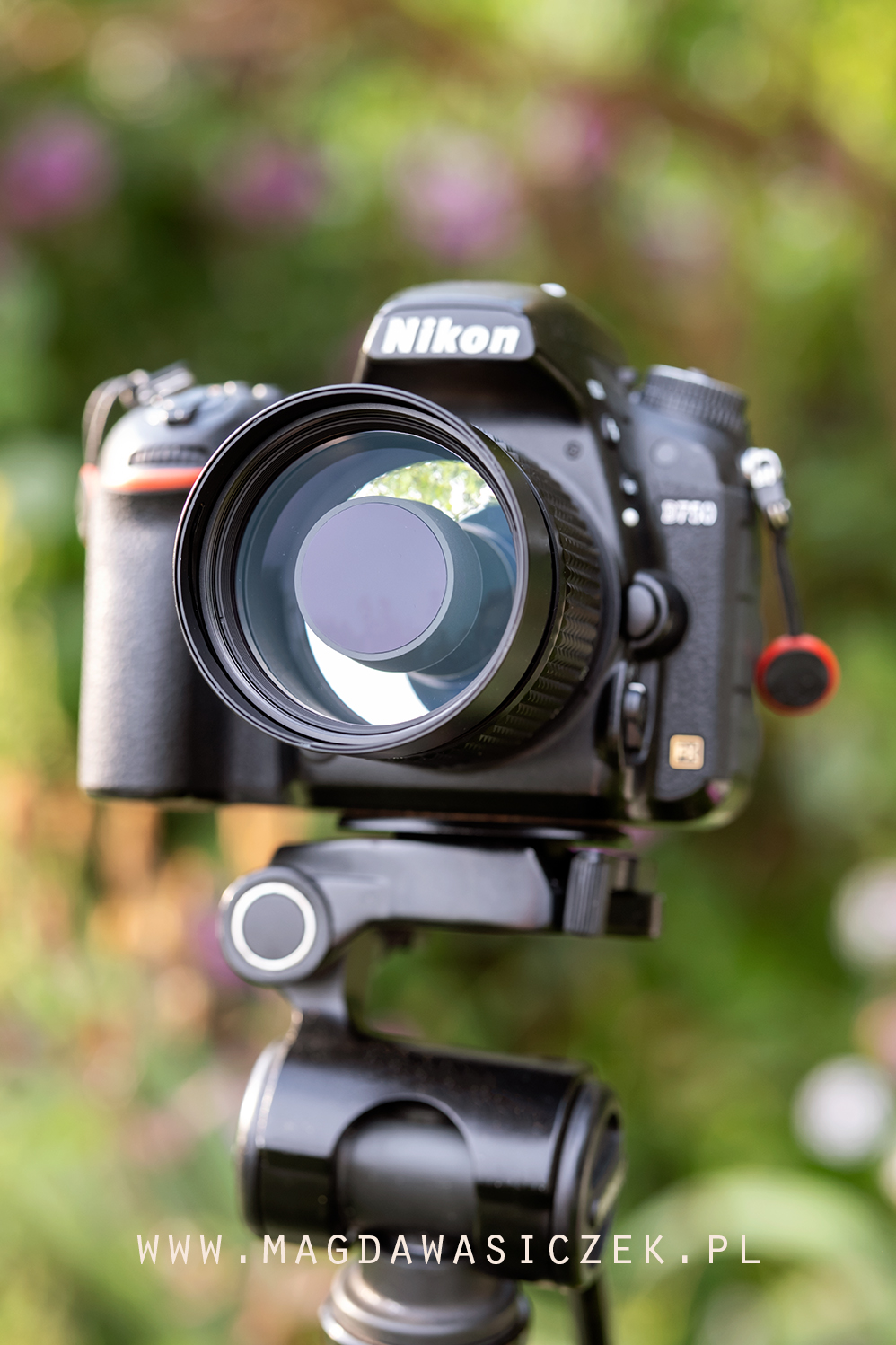
The manufacturer emphasizes the 48 layers of anti-reflection coating. While shooting against the light, occasional lens flares appeared, which couldn't be completely prevented by the flat lens hood. However, these effects can be avoided by slightly changing the shooting angle.
The lens is virtually free of chromatic aberrations. It is a valuable addition for photographers who appreciate the painterly effects and the uniqueness of the bokeh, and are willing to embrace the challenges of manual focusing.
Overall, I can highly recommend the NiSi Reflex 250mm F5.6, especially for my photography courses, as a more affordable and accessible alternative to the iconic Rubinar 300mm.
This review was translated from Polish.

